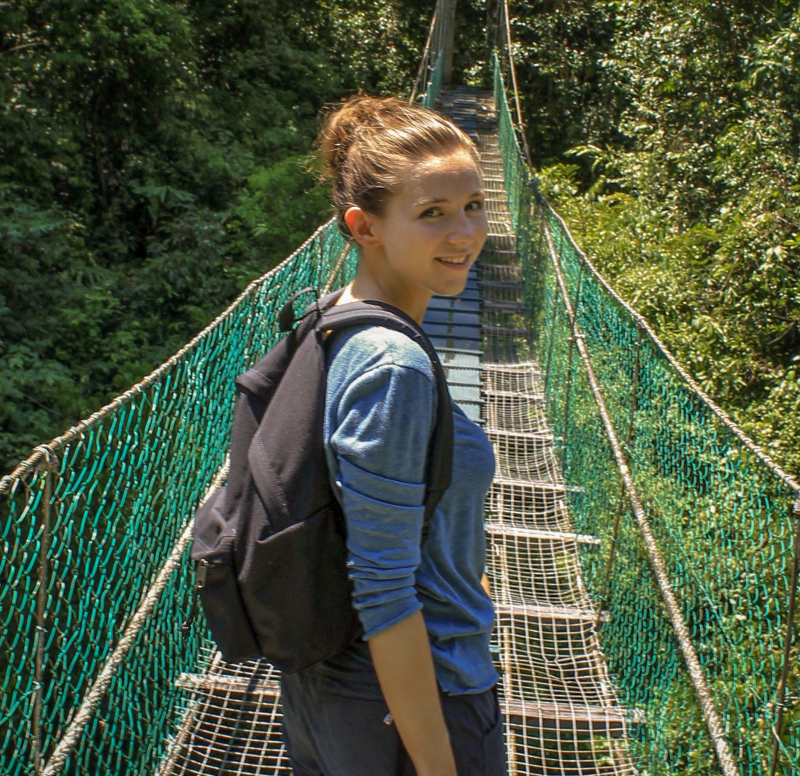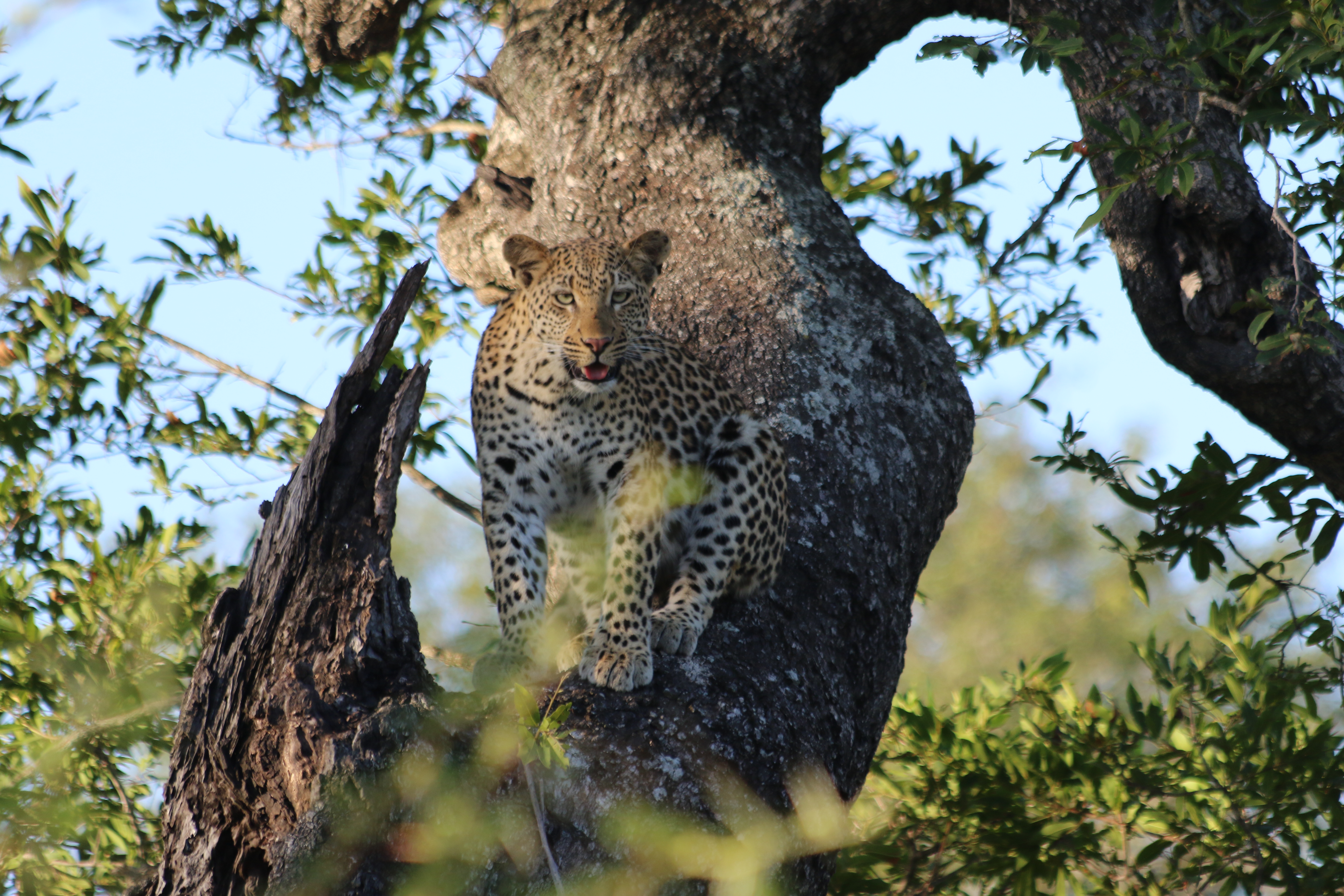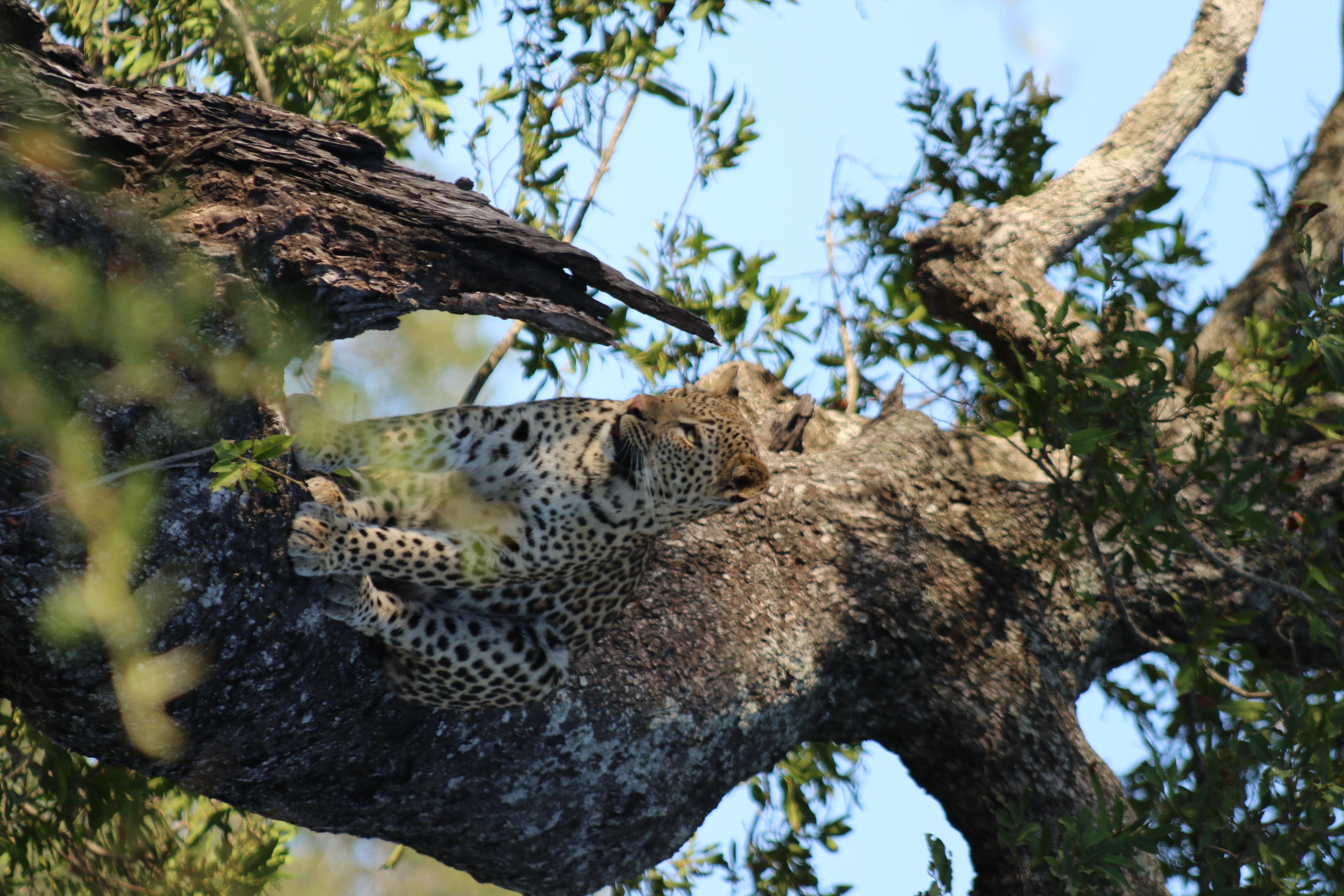News
Charlotte Searle completes her DPhil on African leopards
Although widely considered one of the world’s most resilient large carnivores, the leopard (Panthera pardus) is severely threatened by habitat fragmentation, prey base declines, and human-induced mortality. In Africa, a relative lack of conservation urgency has resulted in the species’ status being poorly understood across much of its remaining range, despite evidence of range contractions and population declines across the continent.
In her DPhil thesis, which she successfully defended on 3 March, WildCRU researcher Charlotte Searle set out to answer some of the most pressing questions facing the long-term persistence of leopard populations in Africa. Charlotte used data from two landscapes which are likely to represent major continental strongholds for the species: the southern KAZA TFCA – part of Africa’s largest transfrontier conservation area – and southern Tanzania’s Ruaha-Rungwa landscape.
Alongside other members of WildCRU, the Trans-Kalahari Predator Programme, and government officials from Botswana and Zimbabwe, Charlotte found leopard to be widespread across the southern KAZA TFCA, and showed that prey and protection are important predictors of habitat use. This work was published in Biological Conservation in 2020. She also worked with Żaneta Kaszta and Sam Cushman to model multi-scale, multi-species habitat use across the same area using machine learning methods, in a study that is currently being prepared for publication.
Charlotte carried out a series of camera trap surveys in the Ruaha-Rungwa landscape in 2018 and 2019, in collaboration with Lion Landscapes Tanzania (formerly the Ruaha Carnivore Project), the Southern Tanzania Elephant Program, and the Tanzania Wildlife Research Institute. In a study that was recently published in Biological Conservation, they provided one of the first assessments of leopard status for Tanzania – a country thought to contain approximately 10% of extant African leopard range – and found that leopard density was likely to be largely driven by availability of prey. Charlotte also used the camera trap data to model activity patterns of large carnivores and investigate coexistence with both competitors and humans, and is currently preparing to submit this work for publication.
Since completing her DPhil, Charlotte has taken up a position with Lion Landscapes to carry out ecological research and monitoring for some of Tanzania’s most important large carnivore populations. In 2021, she will be working with Paolo Strampelli to conduct camera trap and spoor surveys in the Selous-Nyerere ecosystem, in collaboration with Frankfurt Zoological Society, the Tanzania Wildlife Management Authority, the Tanzania National Parks Authority, and the Tanzania Wildlife Research Institute. This work will allow us to better understand the lion, leopard, spotted hyaena, and African wild dog populations in this globally-important landscape, and will provide training in carnivore survey methods to management staff of Selous Game Reserve and Nyerere National Park, so they can continue to monitor large carnivore populations in the future.








